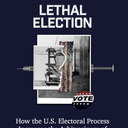
The Ohio Parole Board recently recommended clemency for death row inmate Richard Nields, who was sentenced to death for killing his live-in girlfriend during an argument in 1997. The board questioned the validity of medical evidence used at trial that helped support the death sentence. Testimony provided by a doctor-in-training indicated the victim had been beaten and strangled. However, the deputy coroner and supervisor of the trainee told the parole board there was no scientific evidence to indicate when the victim had received those bruises. The board also cited concerns by the U.S. Court of Appeals that the death sentence barely fit the definition of capital punishment under Ohio’s law, and similar concerns from a dissenting judge on the state Supreme Court. Justice Paul Pfeifer, who helped draft Ohio’s death penalty as a state legislator in 1981, wrote that Nields’s crime was not what lawmakers considered a death eligible case when the law was created. Gov. Ted Strickland will make the final decision on clemency.
(“Ohio board votes for mercy for inmate”, Associated Press, May 18, 2010). See Clemency and Arbitrariness.



